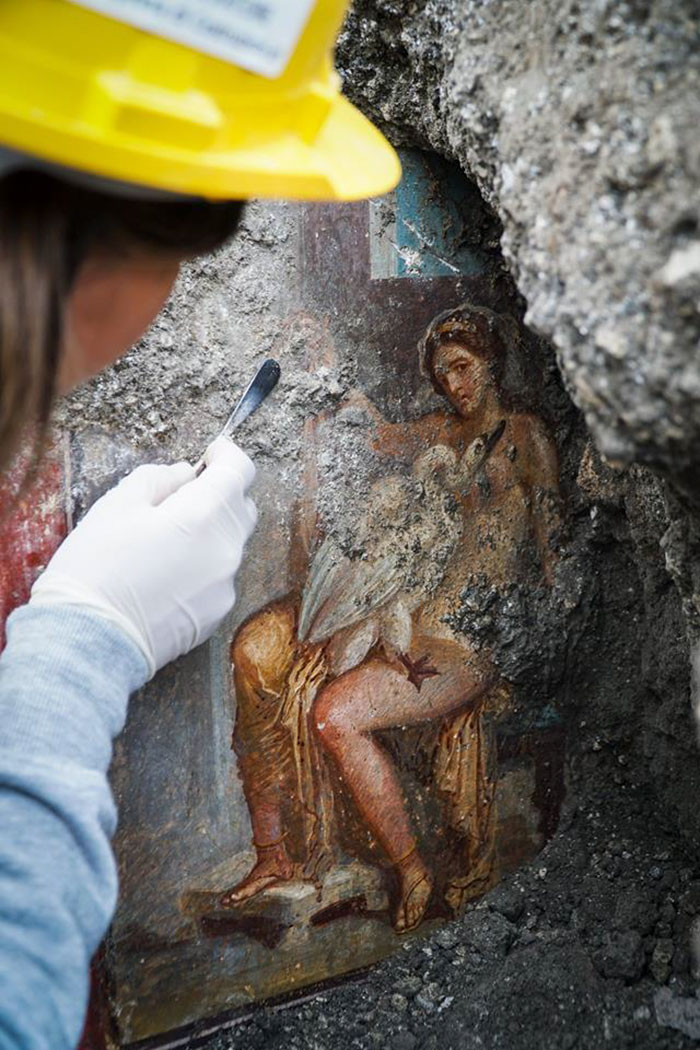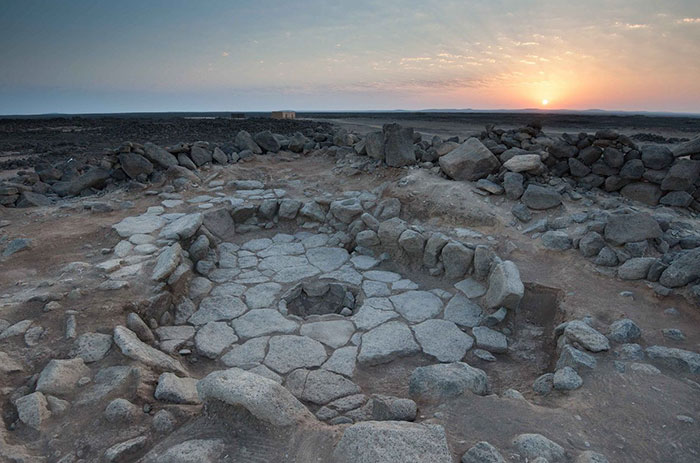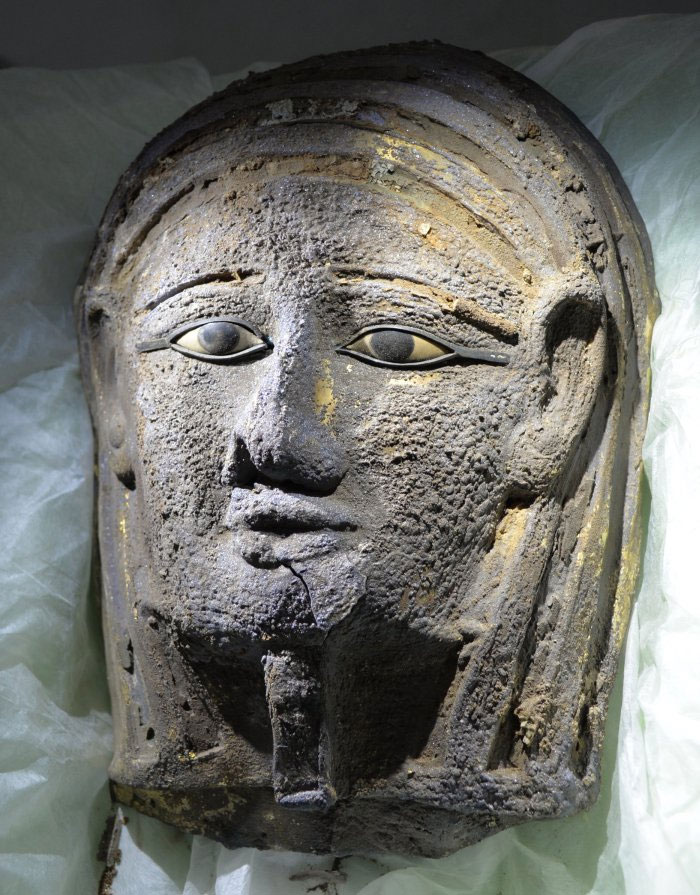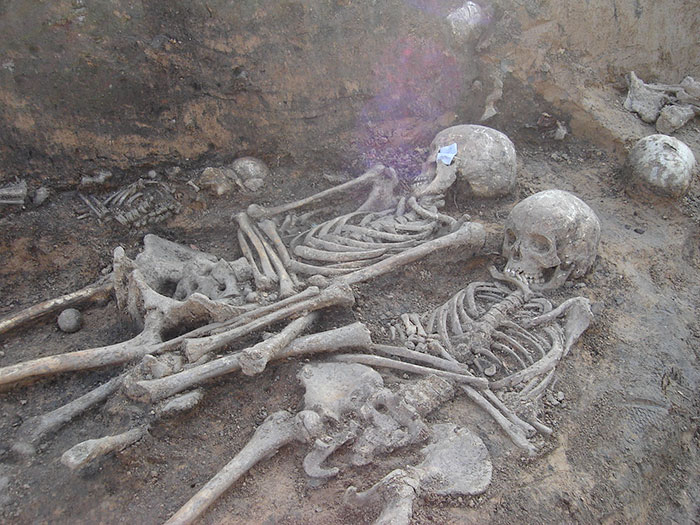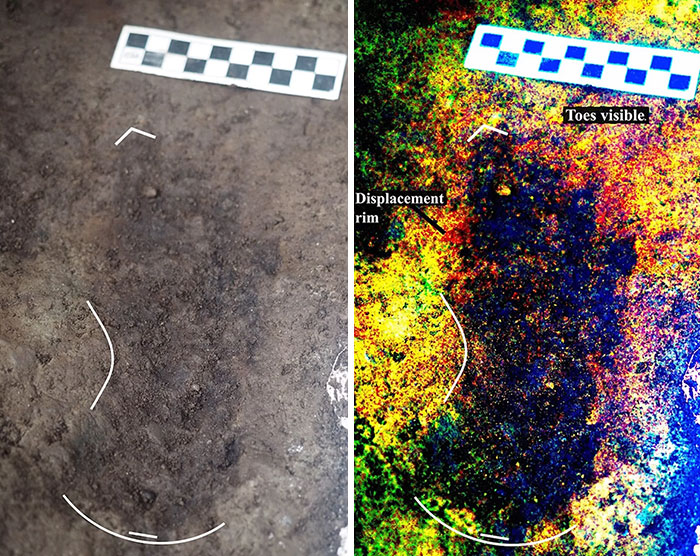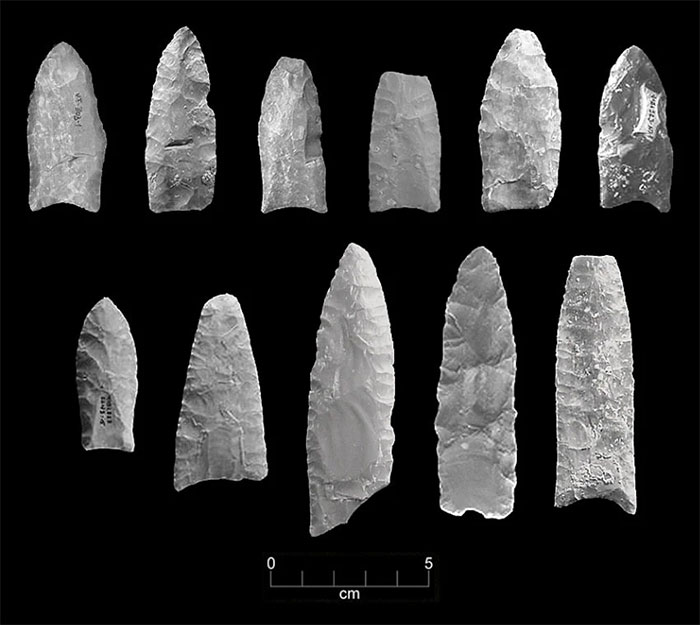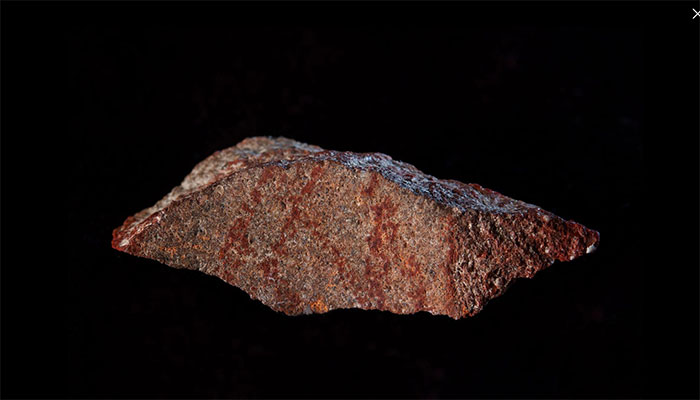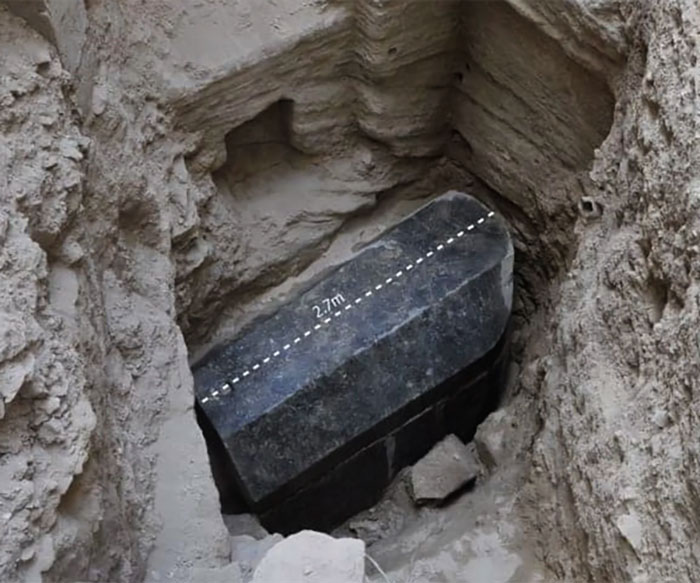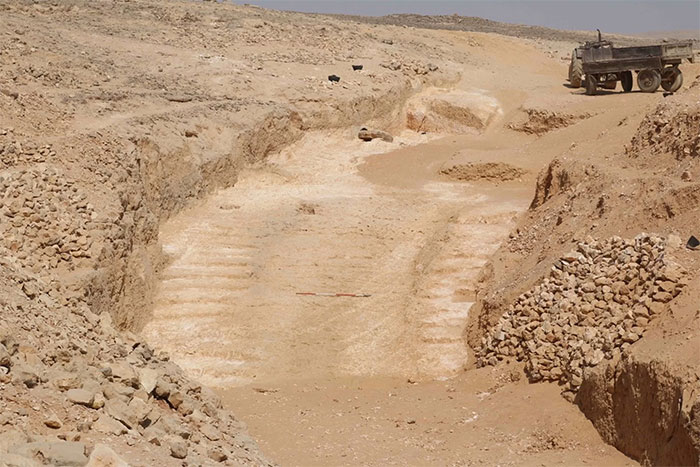2018 has passed and we are already settling in 2019, but even as we move forward it’s never a bad time to remind people about the incredible things that happened this past year that have gone unnoticed. Even though there were many groundbreaking events that most of us have already heard about, there were some incredible discoveries made that might have flown under your radar. With this list we have decided to shed some light on the most incredible archeological discoveries made in 2018, that might change our understanding of history forever.
This post may include affiliate links.
Oldest Shipwreck Found In The Bottom Of Black Sea
More than a mile under the surface of the Black Sea a Greek merchant ship was discovered. It is believed that the ship is around 2,400 years old, making it the world’s oldest known intact shipwreck. It was found by the Black Sea Maritime Archeology Project near the coast of Bulgaria. Since the Black Sea’s depths are oxygen free, the shipwreck remained in remarkable condition, giving researchers the possibility to examine and learn more about shipbuilding in the ancient world.
Archaeologist Excavate The Last Unexcavated Area Of Pompeii
After many years of research, there was still one-third of the ancient city of Pompeii that had never been explored - but in 2018 that all changed. An excavated area that was already known to the public was in danger since the mud, ashes and harden bits of lava from the unexcavated area were collapsing and sliding towards it. Due to the danger of losing an already explored area, archaeologists rushed to excavate the last area called Regio V. Inside researchers uncovered a new set of frescoes as well as a room that was built as a shrine to the guardian deities known as Lares who were believed to protect homes and fields in the ancient culture. "During the excavations in Regio V new walls and other treasures are emerging from lapilli. In one of the houses that was partially excavated in the late Nineteenth century - the house of Jupiter - now we can see brightly colored walls and some frescoes, including the first mythological scene found during these excavations: probably it is Adone Wounded in the arms of Aphrodite, surrounded by Cupids," said the researchers.
The First Bakers 14,400 Years Ago
Turns out that 14,400 years ago, at least 4,000 years before the start of agriculture, people were already trying to find a recipe for delicious pita. Researchers from the University of Copenhagen found a small campsite that belonged to a culture known as the Natufians, and in the campsite, they found bread-like products that sparked their curiosity. It appeared this culture already had ovens and the remains found in them show that Natufians collected wild cereals and tubers in order to make flour for bread. It is believed that this type of recipe was not an ordinary everyday dish but rather a treat reserved for special occasions. Besides that, scientists at Stanford University analyzed residues from three Natufian stone mortars and found evidence proving that Natufians were brewing beer from wild wheat and barley 13,000 years ago. These two discoveries may prove that our ancestors were bakers and brewers way before the dawn of agriculture.
Incredibly Unique Mummy Found Inside Burial Site In Egypt
German and Egyptian archaeologists found an ancient funeral parlor in Egypt. The rectangular building the scientists stumbled upon was considered to be a mummy workshop, one of the main indicators being hundreds of ceramic bowls that stored various oils and substances used in a mummification process. The workshop’s open courtyard had a 100-feet-long tunnel that led to burial chambers with dozens of mummies. One of the biggest findings in those chambers was a sarcophagus that belonged to a lady named Tadihor. The sarcophagus was surrounded with dozens of protective figurines that had her name inscribed on them. That mummy had a silver mask placed on her face, which, according to historians, held a deep religious meaning, since Egyptian religious texts indicate that bones of gods are made of silver and gold. A mummy carrying a silver mask meant that the deceased person is beginning a transformation into a god after her death.
Bacteria That Caused The Black Death Plague Also Found In Skeletons From 3800 Bc
You already know of the Black Death that swept through Europe in the 14th century. This terrible plague resulted in over 50 million deaths and is still remembered to this day as one of the most catastrophic illnesses in history. Well, recently archeologists made an astonishing discovery that shows skeletons from around 3800 BC that contained Yersinia pestis (a bacteria that causes the plague). This discovery suggests that pestis lineages were established during the Bronze Age which means the plague had an earlier outbreak which had a major effect on migration across Europe and Asia. During that period, there was a sudden spread of steppe herders from Eastern Europe to Western Europe between 3000 and 2500 BC, to this day scientists were uncertain what may have caused this sudden migration, Johannes Krause, a German geneticist says that pandemic might be a reasonable explanation.
Oldest Human Footprint
The oldest human footprint was found on Calvert Island, Canada in March. The footprints might be older than 13,000 years and belonged to three people – a child and two others who may have been adults. The footprints managed to stay visible because at that time the three humans stepped on wet clay that hardened and filled with sand. Archaeologist also found a small piece of wood along with the footprints which allowed them to run radiocarbon dating on the prints, which then revealed their footprints dated back between 13,300 and 13,000 years ago.
These 13,000-Year-Old Tools Made Historians Wonder Who Were The First People To Live In America
2018 might have been the year when one of the biggest American archaeology questions was answered, and that is – who were the first people to live in America? Until now, schools taught children that the first people to live in the territory of America were named Clovis, a culture that came to North America from Siberia around 13,000 years ago. Now, after doing more in-depth research, scientists believe that people might have come to America far earlier than that. Excavations in Texas revealed previously unknown tools that are older than 13,000 years, amongst these tools, were blades, projectile points, and flake tools oldest of which date to between 20,000 and 16,000 years ago making them thousands of years older than any tool known to belong to the Clovis people.
This is basically the Solutrean hypothesis, where Europeans arrived in what is now the US north-east. This would be during the height of the last glaciation period, where movement across Arctic Ice sheets allowed for migration into the New World. While Clovis and Solutrean projectile points are not the same, they have many similarities in technique. Also genetic material, known as Haplogroup X mitochondrial DNA shows up in northeaster archaeological sites, and radiating southward and westward. And this "Haplogroup X" would have come directly from the European gene pool. One can read about this Solutrean hypothesis here: https://en.wikipedia.org/wiki/Solutrean_hypothesis
Oldest Sketch Ever Drawn
In 2018, archaeologist found a stone with red lines drawn on it that is believed to be 73,000 years old - making it the oldest sketch ever found. The Blombos cave where the sketch was discovered also had Homo Sapien bone tools, teeth, engravings, and beads made from seashells. This finding may also have provided further information on Homo Sapiens use of symbols which is the foundation for mathematics and language. With the help of a microscope, scientists found out that the rock was painted using red ocher, a pigment that was often used in the prehistoric paintings.
Earliest Representation Of A Human Body Part
Swiss archeologists announced that they found the earliest representation of a human body part in Europe. In 2017, treasure hunters found it using metal detectors alongside a bronze dagger and a rib bone. Archeologists claimed they had never seen anything like it and at first, they weren’t even sure if it was authentic. Now, it has been determined that this artifact dates back to the middle of the Bronze Age. According to the Swiss archeologists, metal objects in the Bronze Age are extremely rare, and gold is almost never found since there are thousands of Bronze Age graves that have been found and none of them had anything similar, which proves that a sculpture like this is truly unique.
Our Ancestors Might Have Been Drinking Beer Earlier Than You'd Think
Recent excavations in Israel have found that the world’s oldest beer may have been brewed for a funeral over 13,000 years ago which makes it the oldest man-made alcohol in the world. A graveyard cave in Israel had traces of wheat and barley lining pits carved into bedrock. This discovery was hypothesized to be leftovers from beer brewing, probably as a part of a funerary feast.
Sarcophagus Bodies With Weird Red Sewage Inside
This is finding raised the most media attention in 2018. When archaeologists found a new sarcophagus in Egypt they immediately decided to open it, and inside they found that red sewage had somehow managed to seep inside. Even though the sewage looked absolutely disgusting, there were still a decent amount of people who actually asked to drink the sewage believing it held some type of special powers (hard to believe, we know). They even went as far as to create a petition for their request, with thousands signing up. Inside the sarcophagus, the archaeologists found the body of a young woman who was between 20 and 25 years old, as well as two men in their 30s or 40s. This finding is considered to be the largest sarcophagus ever found in Alexandria. The thick layer of mortar that was covering it leads them to believe that it was never opened before and that the mystery liquid was just sewage that seeped in.
A Ramp That May Have Been Used To Build Pyramids
Archaeologist found a 4,500-year-old pyramid contraption that might have answered the age-old question of how the Great Pyramid at Giza was constructed. Researchers managed to find a ramp system that was used to pull alabaster stones up a steep slope. Yannis Gourdon, co-director of the joint mission at Hatnub explained how this mechanism could have helped Egyptians to build pyramids: “Using a sled, which carried a stone block and was attached with ropes to these wooden posts, ancient Egyptians were able to pull up the alabaster blocks out of the quarry on very steep slopes of 20 percent or more.”

 Dark Mode
Dark Mode 

 No fees, cancel anytime
No fees, cancel anytime 









